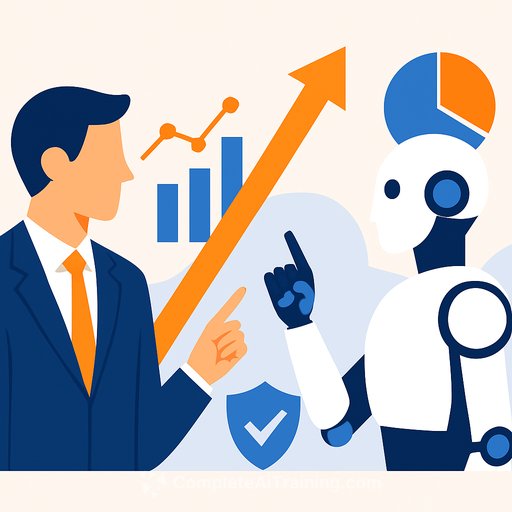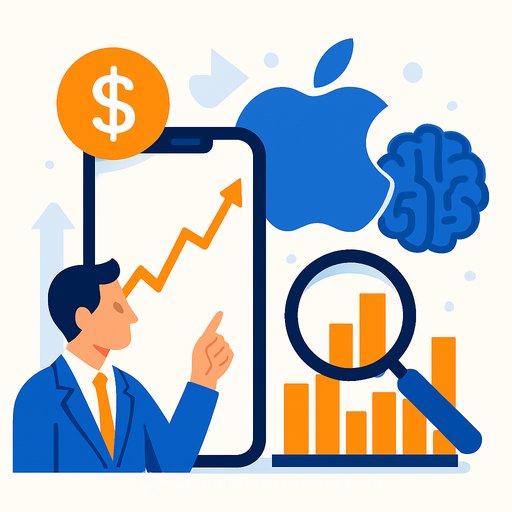Bring AI To Your Data: Inside NetApp's 2025 Strategy
NetApp is reframing itself from a storage vendor to a data intelligence platform. The core idea: move AI to where data lives, not the other way around. At Insight 2025, the company introduced AFX (a disaggregated, composable data infrastructure) and AIDE (AI Data Engine) to make enterprise data AI-ready, secure, and current without creating endless copies.
As George Kurian put it, "We would bring AI to your data." The goal is practical: reduce copies, raise data quality, and shorten the path from dataset to model output.
Why this matters for executives
- AI ROI depends on data readiness, not just GPUs. Dirty, duplicated, or siloed data kills throughput and trust.
- Compute-near-data cuts latency, cost, and risk. Copy-less pipelines reduce storage spend and governance overhead.
- Security moves down to the data plane for faster threat detection and compliance alignment.
What AFX and AIDE actually do
- AFX composable infrastructure: Combines data access nodes (classic file/block/object) with data processing and transformation nodes (DX series, e.g., DX50) to prep enterprise data for AI where it's created.
- AIDE (AI Data Engine): Software services layered on the data platform: active metadata, data curation, guardrails, lineage tracking, and policy-driven transformation.
- Format breadth: Beyond file/block/object to vector embeddings, tokenized data for LLMs, Apache Iceberg tables, Parquet, CSV, and JSON.
- Copy-less vector embedding: Keep source and AI-ready representations in the same volume to minimize duplication.
- Change-aware processing: Use proven change detection (e.g., SnapDiff) to re-run models only on modified data instead of the entire corpus.
How NetApp differentiates
- Operates at two layers: Storage and data. Not just storage primitives; also metadata intelligence and data orchestration.
- Active metadata at scale: Tagging and annotation to create governed "communities of data" that map to business domains and policy.
- Installed base leverage: A large unstructured data estate to activate with AI without re-platforming.
Security and compliance at the data plane
NetApp emphasizes secure data management aligned to the NIST lifecycle. Pushing controls (encryption, deletion, anomaly detection) closer to where data is written shortens detection time and tightens compliance posture.
Context: The NIST Cybersecurity Framework remains a useful north star for control mapping and audits. See NIST CSF.
Channel as strategy, not a route to market
The partner ecosystem is central. Partners are expected to build services around data readiness for AI: assessment, policy and guardrails, modernization of data pipelines, and ongoing governance. The model is simple: sell outcomes tied to data quality, lineage, and cycle time-not just capacity.
Government and policy headwinds
NetApp is cautious on U.S. public sector demand as priorities shift. On talent, raising H-1B application fees to $100,000 would push hiring to where the talent resides and would have blocked Kurian's own path. Expect more distributed R&D hubs if costs persist.
Enterprise AI timeline you can plan around
- H2 2025: More proofs of concept with real data and policy constraints.
- 2026: First wave of production deployments at scale.
That means now is the window to consolidate data, unify structured and unstructured sources, and stand up metadata, lineage, and access controls.
The executive playbook
90-day action plan
- Inventory the data estate: Map systems, owners, data classes, governance status, and copy chains.
- Pick two AI use cases: One revenue-facing, one efficiency-focused. Define measurable outcomes.
- Design for compute-near-data: Pilot a topology that runs vectorization and transformation on the storage-adjacent tier.
- Implement active metadata: Standardize tags, sensitivity labels, and business domains; automate lineage capture.
- Stabilize security at the data plane: Encryption, immutable snapshots, anomaly alerts, and least-privilege mapped to roles.
- Cut copy sprawl: Target a 30-50% reduction by using copy-less embeddings and first-class snapshots instead of cloned datasets.
- Wire change detection to model refresh: Re-run pipelines only on changed partitions; track freshness SLAs.
- Enable partner services: Stand up packaged assessments for "AI-ready data" with clear deliverables and pricing.
KPIs that matter
- Time to "AI-ready" data (ingest to feature/embedding availability)
- Data copies per domain (target: down and trending)
- GPU utilization tied to data I/O wait (target: up, less idle)
- Freshness SLA hit rate for training and RAG corpora
- Lineage coverage (% of models/datasets with end-to-end traceability)
- Security: time-to-detect anomalies at the data plane; ransomware recovery point/time objectives
Risks and how to reduce them
- Data sprawl: Enforce copy budgets and lifecycle policies; consolidate pipelines near primary data.
- Vendor lock: Favor open table formats (Iceberg/Parquet) and standard APIs; keep vector indexes portable.
- Compliance drift: Automate tagging, retention, and legal holds at ingest; audit lineage monthly.
- Skills gap: Upskill data, security, and platform teams on AI data pipelines and metadata ops. Explore role-based learning for fast lift. See curated AI courses by role.
Competitive context
Several vendors now market "data clouds." NetApp's stance is to operate at both storage and data layers, with active metadata and change-aware pipelines. The practical edge is copy reduction, policy enforcement at write-time, and proven primitives scaled across a large unstructured estate.
Strategy takeaway
AI value depends on moving intelligence to the data, enforcing policy where bytes are created, and eliminating wasteful copies. NetApp's AFX and AIDE aim to make that operational-with partners delivering services on top. If your first production deployments start in 2026, your data platform decisions happen now.
Context on AI's enterprise potential: McKinsey's latest estimates.
Your membership also unlocks:






